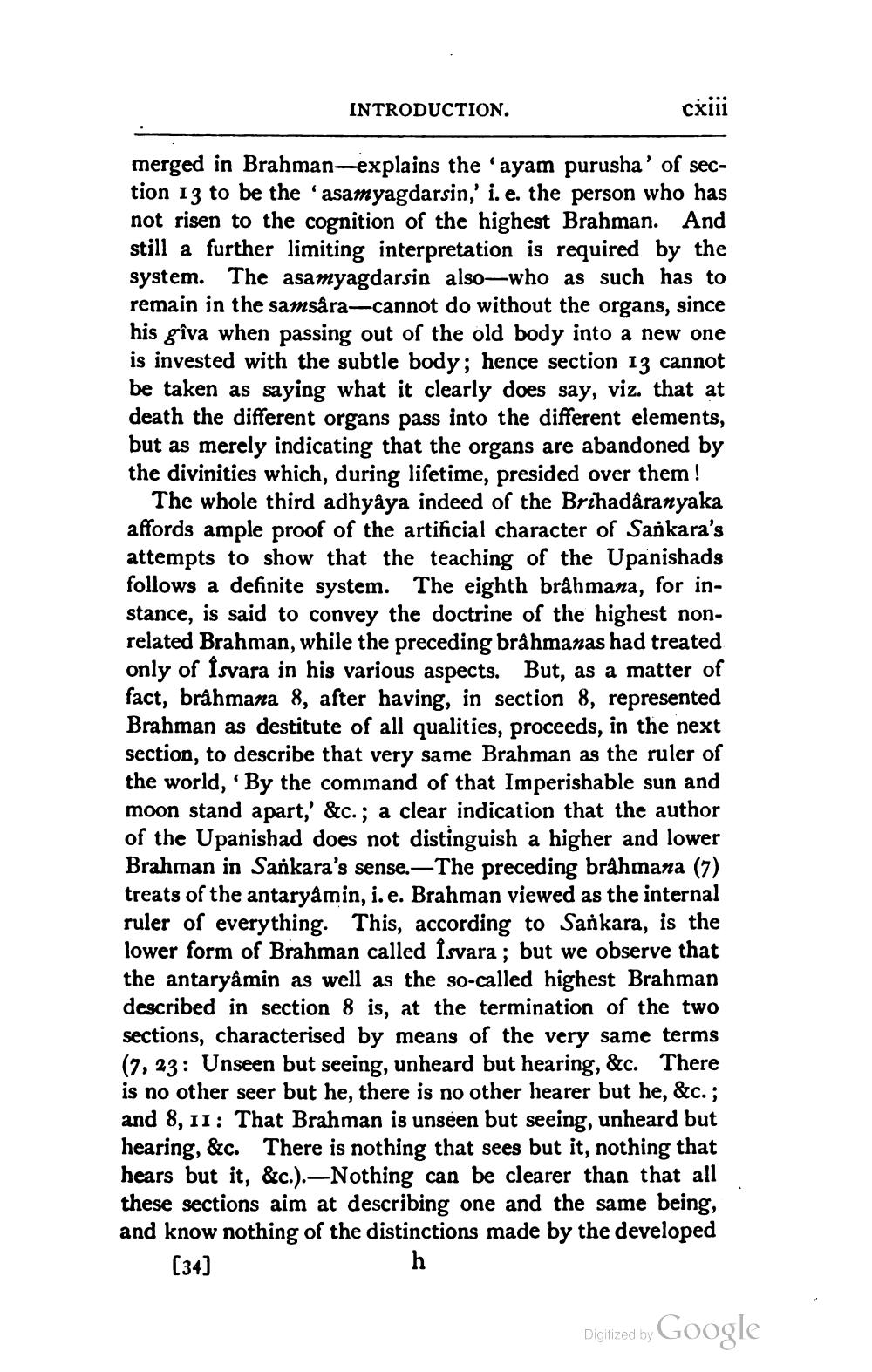________________
INTRODUCTION.
схііі
merged in Brahman-explains the 'ayam purusha' of section 13 to be the 'asamyagdarsin,' i. e. the person who has not risen to the cognition of the highest Brahman. And still a further limiting interpretation is required by the system. The asamyagdarsin also—who as such has to remain in the samsåra-cannot do without the organs, since his gîva when passing out of the old body into a new one is invested with the subtle body; hence section 13 cannot be taken as saying what it clearly does say, viz. that at death the different organs pass into the different elements, but as merely indicating that the organs are abandoned by the divinities which, during lifetime, presided over them!
The whole third adhyâya indeed of the Brihadaranyaka affords ample proof of the artificial character of Sarkara's attempts to show that the teaching of the Upanishads follows a definite system. The eighth bråhmana, for instance, is said to convey the doctrine of the highest nonrelated Brahman, while the preceding brâhmanas had treated only of Isvara in his various aspects. But, as a matter of fact, brahmana 8, after having, in section 8, represented Brahman as destitute of all qualities, proceeds, in the next section, to describe that very same Brahman as the ruler of the world, By the command of that Imperishable sun and moon stand apart,' &c.; a clear indication that the author of the Upanishad does not distinguish a higher and lower Brahman in Sankara's sense.—The preceding brahmana (7) treats of the antaryâmin, i.e. Brahman viewed as the internal ruler of everything. This, according to Sankara, is the lower form of Brahman called Isvara ; but we observe that the antaryamin as well as the so-called highest Brahman described in section 8 is, at the termination of the two sections, characterised by means of the very same terms (7, 23: Unseen but seeing, unheard but hearing, &c. There is no other seer but he, there is no other hearer but he, &c.; and 8, 11: That Brahman is unseen but seeing, unheard but hearing, &c. There is nothing that sees but it, nothing that hears but it, &c.).—Nothing can be clearer than that all these sections aim at describing one and the same being, and know nothing of the distinctions made by the developed
[34]
.
Digitized by Google
Sle




